| 2 March |
• yesterday • tomorrow |

• Chad of Lichfield
• Apostle of Mercia
• Ceadda...
4 May (translation of relics)
Brother of Saint Cedd and Saint Cynibild. Missionary monk to Ireland with Saint Egbert. Ordained in 653. Studied Latin and astronomy. Abbot at Lastingham monastery, Yorkshire, England; abbot to Saint Owen.
Not long after Chad became abbot, Saint Wilfrid of York was chosen Bishop of Lindisfarne, a see which was soon moved to York. Wilfrid went to Gaul for consecration, and stayed so long that King Oswiu declared the see vacant and procured the election of Chad as bishop of York. Chad felt unworthy, but threw himself into the new vocation, travelling his diocese on foot, evangelizing where he could. When Wilfrid returned in 666, Saint Theodore, Archbishop of Canterbury, decided that Chad's episcopal consecration was invalid, and that Chad must give up the diocese to Wilfrid. Chad replied that he had never thought himself worthy of the position, that he took it through obedience, and he would surrender it through obedience. Theodore, astonished at this humility, consecrated Chad himself, and appointed him bishop of the Mercians in Lichfield in 669.
He founded monasteries, including those at Lindsey and Barrow-upon-Humber, evangelized, travelled and preached, reformed monastic life in his diocese, and built a cathedral on land that had been the site of the martyrdom of 1,000 Christians by the pagan Mercians. Miraculous cures reported at the wells he caused to be dug for the relief of travellers.
Legend says that on one occasion two of the king's sons were hunting, were led by their quarry to the oratory of Saint Chad where they found him praying. They were so impressed by the sight of the frail old man upon his knees, his face glowing with rapture, that they knelt, asked his blessing, and converted. The pagan King Wulfhere was so angry that he slew his sons, and hunted down Saint Chad for some of the same. But as he approached the bishop's cell, a great light shone through its single window, and the king was almost blinded by its brightness; he abandoned his plan for revenge.
During storms, Chad would go to chapel and pray continually. He explained, "God thunders forth from heaven to rouse people to fear the Lord, to call them to remember the future judgment…when God will come in the clouds in great power and majesty to judge the living and the dead. And so we ought to respond to God's heavenly warning with due fear and love so that as often as God disturbs the sky, yet spares us still, we should implore God's mercy, examining the innermost recesses of our hearts and purging out the dregs of our sins, and behave with such caution that we may never deserve to be struck down."
c.620 in Northumbria, England
• 2 March 672 at Lichfield, England of natural causes after a brief illness, probably the plague
• his initial tomb was in the form of a small wooden house
• some relics preserved in the cathedral of Saint Chad in Birmingham, England
• Birmingham, England, archdiocese of
• Lichfield, England, diocese of
• bishop holding Lichfield Cathedral and a branch, usually a vine
• bishop holding the cathedral in the midst of a battlefield with the dead surrounding him
• man with a hart leading hunters to him by a pool
• converting Saint Wulfhald and Saint Rufinus who converted on finding him in chapel while they were hunting
Almighty God, whose servant Chad, for the peace of the Church, relinquished cheerfully the honors that had been thrust upon him, only to be rewarded with equal responsibility: Keep us, we pray, from thinking of ourselves more highly than we ought to think, and ready at all times to step aside for others, (in honor preferring one another,) that the cause of Christ may be advanced; in the name of him who washed his disciples' feet, your Son Jesus Christ our Lord, who lives and reigns with you and the Holy Spirit, one God, now and for ever. - prayer on the feast of Saint Chad
The beloved Guest who would visit our brethren has deigned to come to me also this day and to summon me from the world. Turn your steps to the church and bid the brethren to commend in their prayers my going hence to God, and to remember to prepare for their own departure, the hour of which is yet uncertain, by watching and by praying and by good works. - having been warned of approaching death, Saint Chad speaks to his brothers
https://catholicsaints.info/saint-chad/
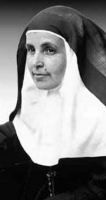
• Angela de la Cruz
• Angela Guerrero Gonzalez
• Angela of the Cross Guerrero y Gonzélez
• Angelita (family nickname)
• Maria of the Angels
• María de los Ángeles
• Mother Angela of the Cross
• Mother of the Poor
One of fourteen children born to a poor but pious family; only five of her siblings survived to adulthood. Her father worked as a cook and her mother a laundress in a Trinitarian Fathers convent, and Angela had to quit school at age twelve to work in a shoe factory to help support her family. She made her First Communion at age eight, Confirmation at nine; she prayed the rosary daily, and had a great devotion as a youth to Christ Crucified. Her piety was so obvious that her employer, Antonia Maldonado, brought her to the attention of Father José Torres Padilla. He became her spiritual director when she was 16, and helped discern if Angela had a call to religious life.
She first tried to join the Carmelites, was refused, and when she was finally accepted at age 19, became so sick that she was forced to return to her family. When she recovered, she began caring for cholera victims, and those even poorer than herself. In 1868 she entered the convent of the Daughters of Charity of Seville, Spain, but again her health failed, and she was forced to return to her parents and the shoeshop. In 1871, with Father Padilla's blessing, she started a plan whereby she lived at home under a particular Rule, yearly renewing her vows.
While in prayer in 1873 Angela received a vision that she understood was calling her to a mission to the poor, and she began keeping a spiritual diary to record what she understood of the life to which God was calling her. Others were attracted to her life, and on 2 August 1875 the Congregation of the Cross was born. The Congregation works with the sick, the poor, orphans, the homeless, finding them food, medicine, housing, and other needs, living solely on alms, and keeping only enough for themselves to continue their work. Though they started with only Mother Angela and three sisters, they had grown to 23 convents during her life, and continue their good works today.
30 January 1846 at Seville, Spain as Maria of the Angels Guerrero Gonzalez
2 March 1932 in Seville, Spain of natural causes
4 May 2003 by Pope John Paul II at Plaza de Colón, Madrid, Spain
The nothing keeps silent, the nothing does not want to be, the nothing suffers all. The nothing does not impose itself, the nothing does not command with authority, and finally, the nothing in the creature is practical humility. - Saint Angela
Love and sensitivity to the poor…prompted Saint Angela of the Cross to found her "Company of the Cross" for the most deprived with a charitable and social dimension that made an enormous impact on the Church and society of Seville in her day. Her distinctive traits were naturalness and simplicity, seeking holiness with a spirit of mortification and at the service of God in her brothers and sisters. - Pope John Paul II in his homily at the canonization of Saint Angela
https://catholicsaints.info/saint-angela-of-the-cross-guerrero/
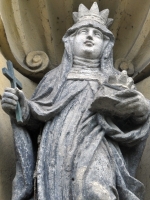
• Anezka Ceské
• Anezka Premyslovna
• Agnes of Bohemia
Born a princess, the youngest daughter of King Ottokar I and Queen Constance of Bohemia. Relative of Saint Elizabeth of Hungary.
Educated by Cistercian nuns at Trebnitz, Germany. Though she early perceived a call to religious life, Agnes was for years promised into a series of arranged marriages for political reasons. At age three she was promised to a prince named Boleslaus. When he died prior to the marriage, she was betrothed to Prince Henry, son of the Holy Roman Emperor Frederick II. When Henry chose to marry another, young Agnes was betrothed to Emperor Frederick himself. With the help and intervention of Pope Gregory IX, though affronted, Frederick released Agnes from her marriage obligations, acknowledging that he had lost her to the king of heaven.
She built a Franciscan hospital on land donated by her brother, King Wenceslaus I. She then established the Confraternity of the Crusaders of the Red Star to staff it and its related clinics. She later built a Franciscan friary, and in 1234, Poor Clare convent of Saint Saviour in Prague (in modern Czech Republic) with the aid of five nuns sent by Saint Clare of Assisi herself. Agnes entered the convent of Saint Saviour herself on Pentecost Sunday 1234, eventually became its abbess, and spent 50 years in the cloister.
Agnes was always free with her wealth in service of the poor. She enjoyed cooking for the other sisters, and mending the clothes of lepers. She had the gifts of healing and prophecy, and was given to ecstasies. Though they never met, she and Saint Clare of Assisi kept up an extensive correspondence for two decades, and some of the letters have survived to today.
1205 at Prague, Bohemia (modern Czech Republic)
6 March 1282 at Saint Saviour convent, Prague, Bohemia of natural causes
12 November 1989 by Pope John Paul II at Rome, Italy
Agnes of Bohemia, although she lived in a period far removed from ours, still remains a shining example of the Christian faith and heroic charity, which invites us to reflection and imitation. She is an example of courage and spiritual help for the young people who generously consecrate themselves to the religious life; for all those who follow Christ; she is a stimulus of charity practiced toward everyone with total dedication, overcoming every barrier of race, nation or mentality; she is the heavenly protectress of our difficult daily journey. To her we can therefore turn with great trust and hope. - Pope John Paul II, during the canonization recognition of Saint Agnes
https://catholicsaints.info/saint-agnes-of-prague/
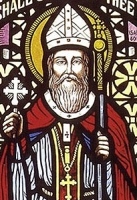
John the Sarumite
Son of Agathon, the governor of Sarum, and Anohamia, grandson of prince Alidipas, and a member of the Frankish royal family which governed Antioch. Educated in Antioch and the monastery of Saint Maron, studying mathematics, sciences, philosophy, theology, linguistics and scripture. Monk at the monastery of Saint Maron, adding the name Maron to his own. Priest.
John studied Greek and patrology in Constantinople. Returning to Saint Maron's, he wrote on such diverse topics as teaching, rhetoric, the sacraments, management of Church property, legislative techniques, and liturgy. He composed the Eucharistic Prayer which still bears his name. Noted teacher and preacher, he explained Catholic dogma to the Council of Chalcedon, wrote a series of letters to the faithful against Monophysitism and Monothelitism, and then travelled to Syria to explain and refute the heresy.
Bishop in 676, assigned to Mount Lebanon with a mission to oppose heresies, keep the Maronites united with Rome, and support the faithful in an area being invaded by Arabs. He travelled extensively in the areas involved in combat, preaching, conducting Mass, tending to the sick, and sheltering the homeless. It was during this terrible period that he was given the gift of healing, curing many praying over them.
The Maronites made up the bulk of the Maradite army, the so-called "Brass Wall" that shielded Constantinople and the Byzantine empire from Arab expansion. In 685 the Maradites used their power and importance to choose John Maron, one of their own, as Patriarch of Antioch and all the East. John received the approval of Pope Saint Sergius I, and became the first Maronite Patriarch of the oldest see in Christianity.
The Byzantine emperor Justinian II feared the growing power of the Maradite army, and was angered that his approval had not been sought for the appointment of John as Patriarch. He sent his army to defeat the Maradites and capture John. They managed to win battles against the Maradites, overrun Antioch, and destroy the monastery there, killing 500 monks in the process. John, however, escaped to Lebanon. When Justinian's army followed, the Maradites, under the leadership of John's nephew Ibrahim, defeated them decisively, sending them home empty-handed. John then founded the monastery of Reesh Moran (head of our Lord) in Kefer-Hay, Lebanon, and moved his see to Mount Lebanon. The Maradites sealed themselves off from the outside, and founded their own national and religious identity, though still part of the Catholic Church, with John seen as one of their great founders.
7th century in Sarum
• 707 at Kefer-Hay, Lebanon of natural causes
• buried in the Reesh Moran monastery
https://catholicsaints.info/saint-john-maron/
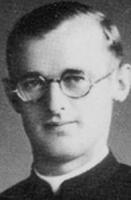
• Angel of Dachau
• Hubert Unzeitig
Professed priest in the Congregation of Missionaries of Mariannhill, ordained in 1939 and taking the name Engelmar. Parish priest in Glöckelberg, Czech Republic. Arrested by the Gestapo on 21 April 1941 for the crime of being a priest and preaching against the teachings of the Nazis, he was sent to the Dachau concentration camp where he ministered to other prisoners. He learned Russian so he could minister to prisoners from Eastern Europe. He volunteered to tend to prisoners suffering from typhoid and died of the disease himself.
1 March 1911 in Czech Republic as Hubert Unzeitig
2 March 1945 in Dachau, Oberbayern, Germany of typhoid fever
• 24 September 2016 by Pope Francis
• beatification celebrated in the Cathedral of Sankt Kilian, Würzburg, Germany, presided by Cardinal Angelo Amato
Whatever we do, whatever we want, is surely simply the grace that carries us and guides us. God’s almighty grace helps us overcome obstacles.
Love doubles our strength, makes us inventive, makes us feel content and inwardly free. If people would only realise what God has in store for those who love him!
Even behind the hardest sacrifices and worst suffering stands God with his Fatherly love, who is satisfied with the good will of his children and gives them and others happiness.’
– from letters written from the Dachau concentration camp by Father Engelmar to his sister
https://catholicsaints.info/blessed-engelmar-unzeitig/

Charles of Flanders
Born a prince, the son of King Saint Canute of Denmark and Adela of Flanders. After his father's murder, he was raised in the court of his maternal grandfather, Robert de Frison, Count of Flanders (part of modern Belgium. Fought in the Second Crusade. Succeeded Robert II as count of Flanders in 1119. Married into the family of the Duke of Clermont (in modern France. His rule was a continuous defense of the poor against profiteers of his time, both clerical and lay. Called the Good by popular acclamation. Reformed laws to make them more fair, supported the poor, fed the hungry, walked barefoot to Mass each day. Martyred in the church of Saint Donatian of Rheims at Bruges by Borchard, part of a conspiracy of the rich whom he had offended.
1083
• beheaded on 2 March 1127 at Bruges, Belgium
• relics at the Cathedral of Bruges
1883 by Pope Leo XIII (cultus confirmed)
• counts
• Crusaders
• Burges, Belgium, diocese of
• nobleman with a purse and a sword
• after his martyrdom in the cathedral
https://catholicsaints.info/blessed-charles-the-good/
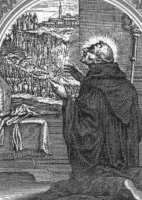
• Luke Casalius
• Luca Casali
• Luca of Nicosia
Educated by the abbot of the monastery of Saint Philip at Agira, Sicily, Italy. Monk at Agira. Priest. Reluctant abbot of his house.
Lucas eventually, for unknown reasons, went blind. One day while they were travelling to Nicosia, one his monks tried to play a trick on the blind abbot by telling him that some towns-people were following them in hope of hearing him preach. Lucas stopped, turned to where he was told the people were standing, and began to preach to the empty field. When he finished, the stones along the road all shouted "Amen", confounding the practical joker. A church dedicated to Lucas was later built on the spot.
Nicosia, Sicily, Italy
• c.800 at the monastery of Saint Philip in Agira, Sicily, Italy of natural causes
• most relics still in Agira
• some relics in Nicosia, Sicily, Italy
Nicosia, Sicily, Italy (his intervention ended a plague there in 1575
https://catholicsaints.info/saint-luke-casali/

• Quintus the Confessor
• Quintus of Phrygia
• Quinto
Raised a Christian. Immigrated to Aeolis in Asia Minor, and developed a ministry of serving the poor. Arrested and tortured for refusing to made sacrifice to pagan idols during the persecutions of Marcus Aurelius; his ability to work miracles had drawn the attention of the anti-Christian authorities. When he was released, his wounds were instantly healed and he immediately returned to caring for the local poor.
Phrygia (in modern Turkey)
c.283 of natural causes
https://catholicsaints.info/saint-quintus-the-thaumaturge/

San Carmel
Born to the nobility, a member of the family of the Dukes of Savoy. Soldier. Joined the Mercedarians in Barcelona, Spain on 25 March 1542. Received visions of the Blessed Virgin Mary to whom he was extremely devoted. Wrote in defense of the dogma of the Immaculate Conception. Some accounts describe him as bishop of Teruel, Spain, but that diocese had not been established during his lifetime.
28 May 1558 at Barcelona, Spain of natural causes
https://catholicsaints.info/blessed-girolamo-carmelo-di-savoia/
Gremo, Grim, Gruno
Premonstratensian monk who had a great devotion to Christ in the Passion. Second abbot of Premonstratensian monastery in Ursberg, Bavaria, Germany in 1136, he served the remaining 37 years of his life. He was known as a wise and pious man, and ran his house in fidelity to the Rule of their Order. He rebuilt the monastery following a fire in 1142, and obtained imperial support in 1143. He was known and well regarded by popes, kings and emperors. Legend says that one Good Friday he turned water to wine three times as it was needed.
c.1100
1173 of natural causes
Premonstratensian monk holding a cup or mug
https://catholicsaints.info/blessed-grimo-of-ursberg/

Jaoua, Joevin, Joévin, Jouva, Jaouen, Yaouen
Moved from Britain to Brittany to become the spiritual student of his uncle Saint Paul Aurelian. Monk at Landevennec, Brittany (in modern France). Co-adjutor bishop with, and successor to Saint Paul. At least two churches in Brittany are dedicated to him.
6th century Romano-Briton
• c.570 of natural causes
• buried at Plougen
• his tomb survives, but not his relics
• against cancer
• Plouvien, France
https://catholicsaints.info/saint-joavan-of-brittany/
Group of Christians martyred in the persecution of Diocletian. The only other information that survives are the names of four of them - Heraclius, Januaria, Paul and Secondilla.
c.305 at Porto Romano at the mouth of the River Tiber, Rome, Italy
https://catholicsaints.info/martyrs-of-porto-romano/
A 15th century woman who built a monastery in Valladolid, Spain, which she name for Saint Elizabeth. She then gave away all her possessions, and moved into the house with some like-minded women to live as Franciscan tertiaries. Though never an official head of the group, Beatrice led by the example of her holy life.
• c.1485 in Valladolid, Spain of natural causes
• re-interred in a dignified tomb in 1532
https://catholicsaints.info/blessed-beatrice-hermosilla-of-valladolid/
• Cynibild of Lastingham
• Cynebill, Cynibil
Born to the nobility, the brother of Saint Chad and Saint Cedd. Educated at Lindisfarne by Saint Aidan and Saint Finan, and then in Ireland. Priest. Evangelized the Anglo-Saxons in Northumbria. Founded a monastery in Laestingaeu in north Yorkshire (modern Lastingham), England in 658, and became a monk there.
c.622 in Northumbria, England
664 in Lastingham, England of plague
https://catholicsaints.info/saint-cynibild/
Martyrs under the Lombards
Approximately 400 northern Italian Christians martyred for their faith by pagan Lombards. Their story was recorded by Pope Saint Gregory the Great, who reports that they people spent their final days supporting each other with prayer.
c.579 in Campania, Italy
https://catholicsaints.info/martyrs-of-campania/
• Fergna of Iona
• Ferona, Virgno
Relative and spiritual student of Saint Columba. Abbot at the monastery of Iona.
6th century in an area in modern northern England or southern Scotland
c.630 of natural causes
https://catholicsaints.info/saint-fergna-the-white/
• Cuán of Áth Eascrach
• Cavan, Cuana, Dochua Oiléin, Dochuailéan, Mochua
Listed in early saint lists, but we have no details about him.
770 of natural causes
https://catholicsaints.info/saint-cuan-of-ahascragh/
Bishop of Treves, France in the late 4th-century. Zealous opponent of the Priscillianist heresy. Late in life he retired to live as a monk. Most early records of his diocese were destroyed in the 9th century, and no other information about him has survived.
https://catholicsaints.info/saint-felix-of-treves/
Prospero
Bishop of Como, Italy in the latter 6th century.
• c.600 of natural causes
• buried in the basilica of Sant'Abbondio in Como, Italy
• relics re-discovered in 1687
https://catholicsaints.info/saint-prosperus-of-como/
Velleicus, Willaik, Willeicus
Benedictine monk. Spiritual student of Saint Swithbert. Prior and then abbot of the abbey of Kaiserwerth, Germany.
in England
726 of natural causes
https://catholicsaints.info/saint-willeic/
Troade, Troadio
Martyred in the persecutions of Decius. Saint Gregory the Wonderworker wrote about him.
c.250 in Neo-Caesarea, Pontus (in modern Turkey)
https://catholicsaints.info/saint-troas/
Martyred in the persecution of Valerian.
• c.258 at Rome, Italy
• buried beside the Latin Way
https://catholicsaints.info/saint-basileus-the-martyr/
Martyred in the persecution of Valerian.
• c.258 at Rome, Italy
• buried beside the Latin Way
https://catholicsaints.info/saint-jovinus-the-martyr/
Lorgio
Martyr.
Caesarea, Cappadocia, date unknown
https://catholicsaints.info/saint-lorgius-of-caesarea/
Slebhine
Monk. Abbot of Iona, Scotland from 752 to 767.
Ireland
767
https://catholicsaints.info/saint-slebhene/
Absala
Martyred at Caesarea, Cappadocia, date unknown.
https://catholicsaints.info/saint-absolon-of-caesarea/
Martyr.
Caesarea, Cappadocia, date unknown
https://catholicsaints.info/saint-lucius-of-caesarea/
• Our Lady of Apparitions
CatholicSaints.Info Portable Edition